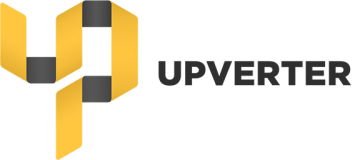
So far, we’ve done a lot of necessary ground work to get to the actual designing stage. Not only do you have an idea for what your product will do based on a problem that you are familiar with, but you’ve also started to refine it through customer discovery, gaining a better understanding of your consumer and the problem that you’re solving. You’ve hopefully started to build an A-Team around your product, and have set up a preliminary framework to collect and grow your mailing list, a.k.a. your first user group.
All of it has led up to this: the actual hardware-building portion of the course! We’re going to start getting into how you can efficiently design, develop, and prototype your product before going into mass-manufacturing. The next few weeks will largely focus on technical content with a few lessons on pre-marketing and pre-sales in between. Once again, the structure of this course covers more than just hardware; it gets into the many business-related items that should be tackled in parallel to developing your flagship product. We hope you’re as excited as we are to get into the meat of building your startup!
We’ve already introduced the Hardware Product Canvas in a previous lesson as a tool for brainstorming and organizing your idea as a collection of building blocks. Today, we’re going to use it as a preliminary step in drawing your product’s block diagram.

Download the hardware product canvas
Roughly divided into five major functional categories, the Hardware Product Canvas is filled in by answering a series of simple questions: How do users interact with the product? How does the product communicate with other hardware? What protocols should it support? Can you control the product remotely? Does it store data? Does it sense environmental forces?
By filling in the blanks, you determine how your product functions while gaining a clear idea of what kind of parts you’d need to build it. The exercise might bring up questions that you hadn’t thought about before, which might even spark better ideas for how your product communicates and behaves. Download the template here and give it a shot! Read more tips on how to use the Hardware Product Canvas in our blog post and see some examples of what it looks like for devices like FitBit.
What is a block diagram?

For practically any kind of project — a report, a novel, a painting, etc. — it’s always good to start with a sketch of what you want to achieve before undertaking any real work. This is the same for hardware and we call this preliminary sketch a block diagram.
A block diagram represents the fundamental organization of your device. It includes the most important, top-level components and maps their relationships to each other for an overall structure of what you’re about to build. For teams, it’s a great way to communicate how everything is connected and serves as a referential guide during implementation.
Block diagrams can be incredibly detailed, showing everything down to the pin specifics, or they can be more general and serve as a simple skeleton of how the hardware is architected. This largely depends on how complicated your design is, and whether or not you’ve already made decisions on the parts that you’re going to use. Some engineers like to use a software like Visio to draw out their block diagram while others prefer to simply hand-sketch their system.
How do I draw my block diagram?
1. The easiest starting point would be a hub, or the component that is most connected within your system. In most cases, this will be some kind of processing device (e.g.: microprocessor, micro controller, SoC). Look over your Hardware Product Canvas and see which part will serve as your “hub” block. Draw it in a box.
2. The next step would be to draw all your peripheral blocks around it. These are all the other major components that you’ve included in your canvas such as sensors, antennae, flash memory, buttons, etc. At this stage, it’s not hugely important where you place these blocks but as you move on to the next step, you’ll start to adjust where they are to visually and logically group them together.
3. Now draw arrows between each block to illustrate how they are all connected together. The direction of the arrows should indicate the direction in which the data is flowing. You could even go one step further and label the arrows to show specific protocols and interfaces.
Power is often excluded from the block diagram, or shown as a separate diagram in its own “system”. All the devices that you would need to do power conversion, power distribution, battery management, etc., can be laid out in its own diagram to simplify things.
You’ll have a good sense of when your block diagram is done when every function that your board is going to perform is represented and they are all clearly connected together.
Next week, we’ll look at how to go about making a quick proof-of-concept prototype using commodity hardware such as a development board before moving on to picking the actual components that will implement each of the blocks in your block diagram!
https://docs.google.com/forms/d/1YXjfEg8Ljs1Y5IdwYK38HwyOEUqhKUeCiZ-QSGuOuB0/viewform?embedded=true
If you’re just joining us, spend some time going over our earlier lessons and be right on track for next week!
–
Lesson #1: What Type of Hardware Startup Do You Want to Build?
Lesson #2: Exploring Ideas
Lesson #3: Customer Discovery
Lesson #4: The Cardboard Prototype
Lesson #5: The Hardware Lifecycle
Lesson #6: Setting Up Your Business
Lesson #7: Division of Labor

2 thoughts on “Lesson #8: The Block Diagram”